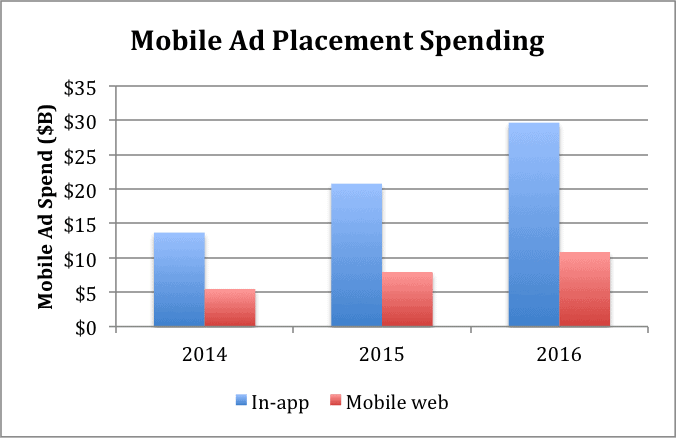This post is part two in a three-part series highlighting key topics for today’s digital marketer. You can get caught up on part one here.
When we start looking at cross-device things get very interesting because in case you haven’t noticed, over the past few years there has been a historic seismic shift towards a mobile-first consumer universe.
In 2014, mobile advertising spend surpassed that of U.S. radio, magazine, and newspaper buys, combined. As VentureBeat reported over “2.1 billion mobile users have downloaded over 350 billion apps, time on device grew 76 percent last year, and we are spending more time on our phones than watching TV.”
This means that the primary challenge for today’s marketers is the mass migration of their customers to a predominantly mobile world. In this mobile-first era, adaptation and agility are imperative – either embrace mobile or wither on the vine.
But “What exactly does ‘Mobile’ really mean?”
And more importantly, “What does it mean for your business?”
Does providing a mobile experience for your customers begin simply with device targeted ads on Search and end with a website optimized for mobile browsers, or is it an ad for ‘Game of War’ with Kate Upton popping up after you had an epic streak in Candy Crush?
Consumers are already spending more time on Mobile than they do on Desktop and according to Nielson, much of that time is spent on mobile apps, to the tune of 9X more time than on mobile web.
eMarketer predicts by 2016 mobile advertising budgets will continue to follow this trend, with 3X more spend going towards In-App advertising compared to Mobile Web, and rightly so given in-app ads’ strong performance, high CTR (Click-Through Rates), and the most measurable ROI of any major mobile ad format.
Source: eMarketer
If you have an app, you need to go all in on app-install ads. This isn’t just advice for mobile-gaming companies, most of whom have already drunk the app-install Kool-Aid. This is advice for any direct response company driving towards classic measurable goals such as an increase in-app downloads and in-app purchases, or any brand advertiser looking to engage with their audience in a completely new way. With 86% of apps downloaded only being used once, many advertisers use in-app ads to prompt the user to dust off and open their app to re-engage with their content.
Focusing solely on Facebook’s mobile app-install ad unit, which is estimated to represent up to one-half of the US mobile app-install ad revenue in 2014, advertisers are seeing CTRs of 0.98%. That’s nearly 4X that of all Facebook ad units combined (0.24%). With engagement rates like this, these ad units carry a hefty price; however, together with mobile measurement platforms they allow for visibility into richer metrics including ROI, Lifetime Customer Value, Revenue per User, and User Retention.
According to Facebook’s recent Atlas report, mobile mandates a new marketing philosophy evolved for the 21st century. Philip Kotler’s famous 4Ps (Price, Product, Promotion, Place) are now the “4Cs” in a mobile-driven world: Choice (highly relevant and personalized messaging), Convenience (turning intent into action immediately at the touch of a button), Cross-Device (unified conversations across all mediums, anywhere, anytime), and Creative Sequencing (What is the story you are trying to tell your consumers and how does it convey value). Every decision marketers make should be rooted in these fundamentals.
With 73% of the world’s population owning a mobile device, and 40% of those devices being smartphones, it is imperative that you have a mobile strategy. Together with audience segmentation you can now give the right person, the right message, at the right time, anywhere. Conversely, not being able to engage with your customers where they spend the majority of their time will only fragment the dialogue further and damage the vital relationship between your brand and your consumer.
Join us for the final post in this series where I’ll discuss the implication of attribution and share some final thoughts for the modern marketer.


